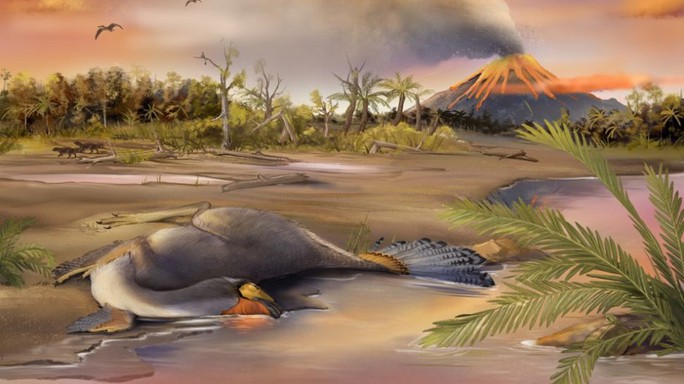Remnants of DNA may be lurking in 125 million-year-old dinosaur fossils – that’s a shocking claim from a research team when analyzing the fossil of a Caudipteryx.
According to Live Science, if confirmed, this would be the oldest chromosomal material recorded in vertebrate fossils.
In a recent paper published in the scientific journal Communications Biology, paleontologists compared fossil cartilage fromdinosaurCaudipteryx was excavated in China with cells from modern chickens and found structures resembling strands of DNA and protein.

The corpse of a Caudipteryx is so perfectly preserved that there is still DNA in the fossil – Graphic image from ZHENG Qiuyang
Paleontologist Alida Bailleul from the Chinese Academy of Sciences, who led the study, said that if there was any DNA or DNA-like molecules in the fission, they could one day unravel the fragments. the genome sequence of this species.
According to a 2012 study, the DNA in bones will be completely broken down in a maximum time of about 7 million years, depending on environmental factors. But there was a time when scientists found an unexpected “treasure”. In 2014, for example, cells containing the intact, clear chromosomes of a 190-million-year-old fern were found. It is spectacularly preserved thanks to being accidentally buried in volcanic ash and then fossilized so quickly that it could not be damaged, some of the cells “frozen” in the middle of the division.
According to Science Alert, the signature of DNA in this dinosaur fossil is not as clear as in the fern, so the team will need to find a few more chemical signatures to identify the mysterious structures, as well as identify the mysterious structures. as the hope of recreating a complete chromosome sequence from this extinct species.
The DNA of extinct organisms is a peerless treasure because it not only provides a wealth of information for in-depth study of the species, but also helps paleontologists do more ambitious things: the first step is to recreate DNA, then find a way to “regenerate” the organism, the same way the US-Russian scientists are trying to do with the mammoth.








